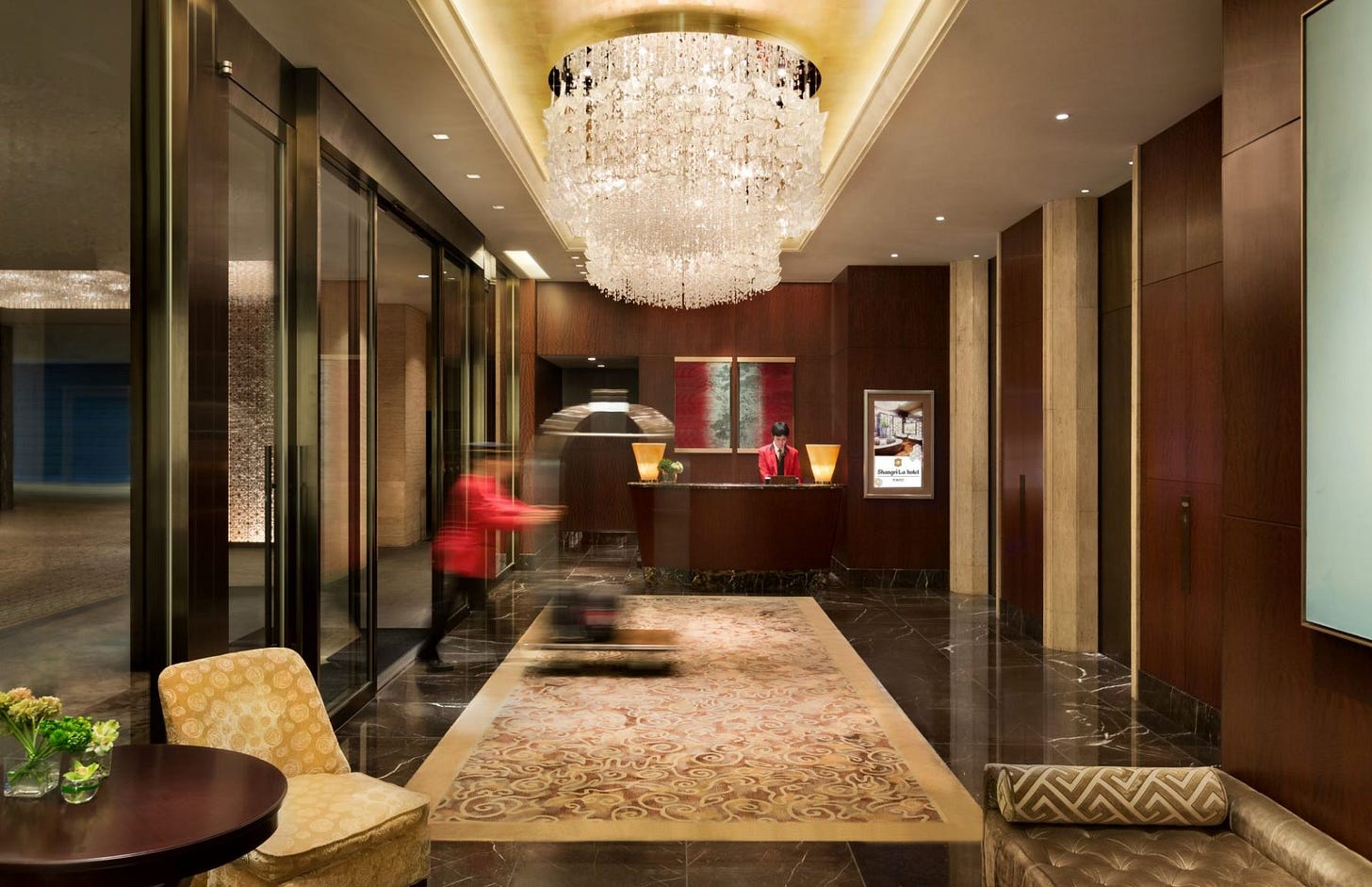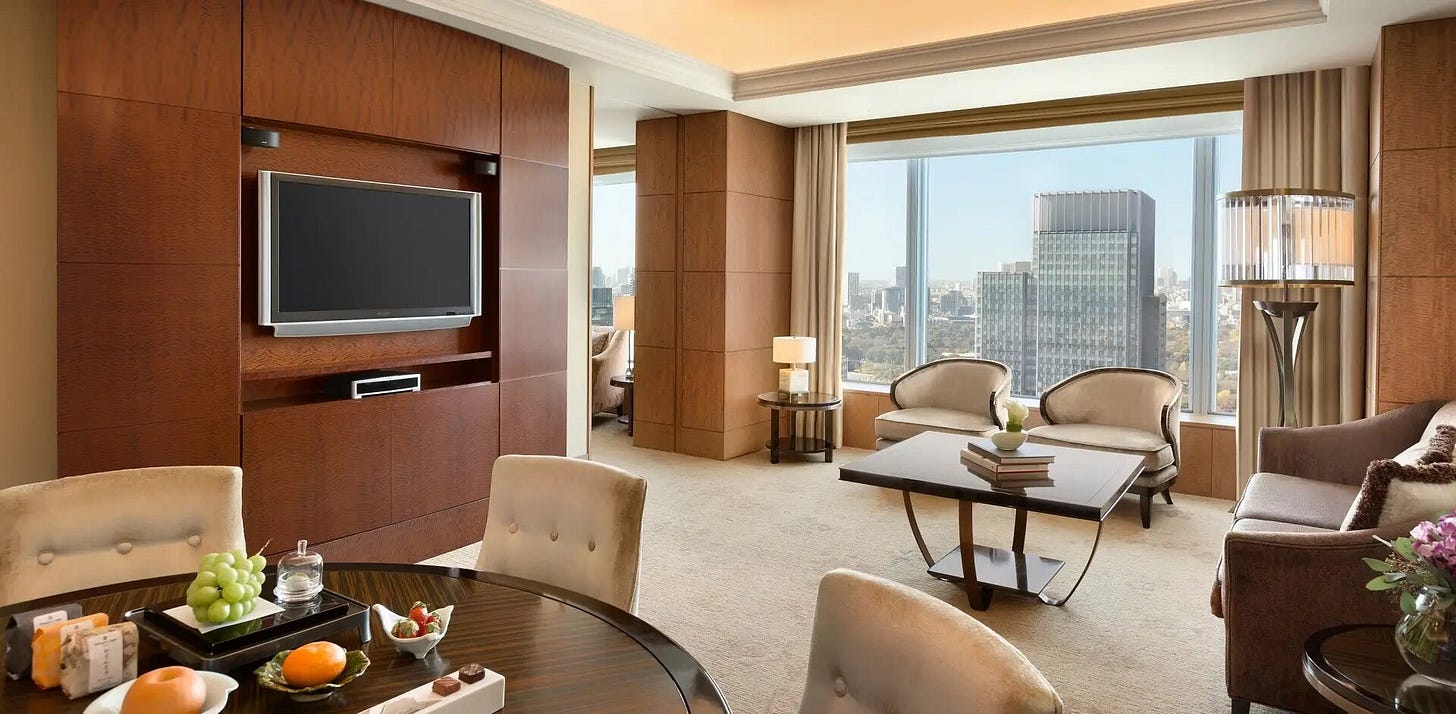Shangri-La Tokyo: Luxury Redefined Above Tokyo Station
Inside Shangri-La Tokyo: Suites, Dining, Spa & Horizon Club Views
Shangri-La Tokyo opened its doors in 2009 as the Hong Kong-based luxury group’s first outpost in Japan. Sitting just above Tokyo Station’s Marunouchi side, it offers immediate access to the city’s transit arteries and yet, it feels deliberately apart from them. Rising from the top floors of the Marunouchi Trust Tower Main, it presents itself as a cocoon of discretion and calm above the capital’s constant motion.
With 200 rooms and suites, expansive views over the Imperial Palace and Tokyo Skytree, and, on clear days, even Mount Fuji, this hotel draws a mix of well-heeled travelers, seasoned business leaders, and culture-savvy visitors who appreciate understatement over spectacle.
The brand’s ethos, built around core values like Sincerity, Humility, or Courtesy, runs through the experience, developing a sensation that’s far from flashy indulgence, but rather practiced grace. This is luxury that doesn’t announce itself. It simply functions in a quiet, yet flawless manner, and with unmistakable presence.
*Please note that this article contains affiliate links.
At a Glance: Highlights of Shangri-La Tokyo
Before unfolding into its many details, Shangri-La Tokyo leaves an immediate impression of quiet command. Interiors are defined by dark wood, silk paneling, custom chandeliers, and curated artworks that bridge Asian heritage with Japanese nuance.
The hotel’s signature Chi, The Spa at Shangri-La, the first in Japan, draws from traditional healing philosophies of the East. Dining spans from the contemporary Italian menu at Piacere to Nadaman, a refined take on kaiseki-style Japanese cuisine. Horizon Club, perched on the 37th floor, offers one of the city’s most exclusive breakfast views.
1-min access to Tokyo Station below makes the location a logistical dream for travelers, while the upper floors shield you from the city’s noise. And throughout the experience, the emphasis remains on balance, privacy, and fluid service.
Rooms & Suites: Space and Stillness in the Sky
From upper left, clockwise: Deluxe Room, Premier Suite, Executive Suite, and Presidential Suite.
With a minimum size of 50 square meters, even the entry-level Deluxe Rooms at Shangri-La Tokyo offer a sense of openness rarely found in the city. Floor-to-ceiling windows frame views of the Imperial Palace, Skytree, or Tokyo Bay, depending on orientation, and the interiors—created by Hirsch Bedner Associates—favor warm tones, subtle textures, and residential comfort.
The hotel offers a total of 200 rooms, including a variety of suite categories such as the Executive Suite, Premier Suite, and Presidential Suite. Each includes expanded living areas, marble-clad bathrooms with deep-soaking tubs, and walk-in wardrobes, with some suites featuring personal spa rooms for in-room treatments.
Dining: The Refinement of Taste with Piacere & Nadaman
Dining at Shangri-La Tokyo follows the same principles as its rooms: charm, sophistication, and a refusal to rush anything. Each venue within the hotel offers a distinct lens on luxury dining, whether through Italian modernity, Japanese tradition, or elegant lounge classics.
Piacere, the flagship Italian restaurant, occupies a sunlit corner of the hotel with double-height windows and interiors by André Fu. Its seasonal course menus center on Japanese-sourced ingredients prepared with Italian technique and understated flair. The wine cellar has received multiple awards, and the restaurant enforces an adults-only policy, reinforcing its quiet, uninterrupted atmosphere.
Nadaman, part of a distinguished restaurant lineage dating back to 1830, prides itself on the height of its kaiseki dining. Sleek design and the best of the local gastronomic tradition guide the experience to maintain an air of traditional hospitality through the lens of contemporary aesthetics.
For more casual moments, The Lobby Lounge serves one of Tokyo’s most elegant afternoon teas beneath a chandelier of 890 hand-blown crystal ginkgo leaves. Seasonal menus feature a variety of international specialties, and the space transitions naturally from daytime meetings to pre-dinner aperitifs.
Across all dining venues, the hotel emphasizes sustainable sourcing under its “Rooted in Nature” program, highlighting ingredients from domestic producers committed to responsible agriculture.
*This content was originally published on Japan Web Magazine (https://jw-webmagazine.com/shangri-la-tokyo/) on July 11, 2025 and is republished here for our newsletter readers.











